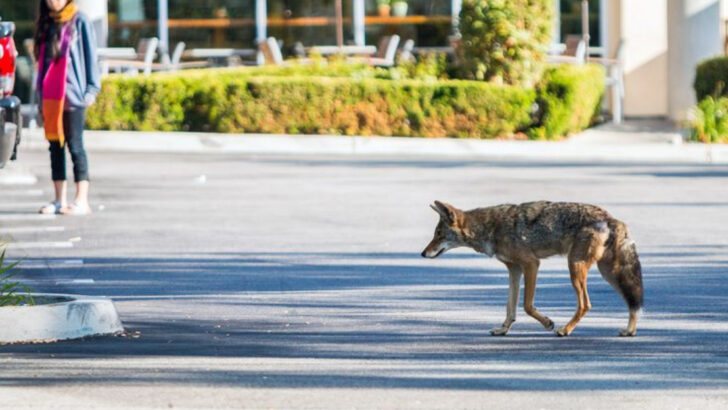Coyotes aren’t just howling in the distance anymore—they’re showing up on your block. From howling hillsides to suburban sidewalks, these wild canines are getting bolder, smarter, and closer than ever. Garbage cans, backyards, even dog parks—they’re turning city life into their own hunting ground. And while they might look scruffy and shy, they’re fast, fierce, and not afraid to snatch a small pet when no one’s looking. Some states are seeing more coyote sightings than squirrels. And it’s not just rural areas. They’re weaving through traffic, slipping past fences, and stalking neighborhoods like ghostly shadows. So what’s going on? Why are coyotes creeping closer, and which states are seeing the biggest shift? Here are the 21 places where coyotes are making their move—and what that could mean for your cat, your dog, and your peace of mind.
California

In bustling California, coyotes have become urban legends, often spotted trotting through suburban streets. Their presence is notable near Los Angeles, where the hills provide a perfect habitat. These clever canines are masters of adaptation, surviving in environments ranging from beaches to mountains.
Pet owners in California are advised to keep cats indoors and dogs on leashes. Coyotes view small pets as potential prey, so vigilance is crucial.
Did you know? Coyotes are known for their distinctive howls, which can often be heard echoing through the Californian night. This iconic sound is both haunting and fascinating.
Texas
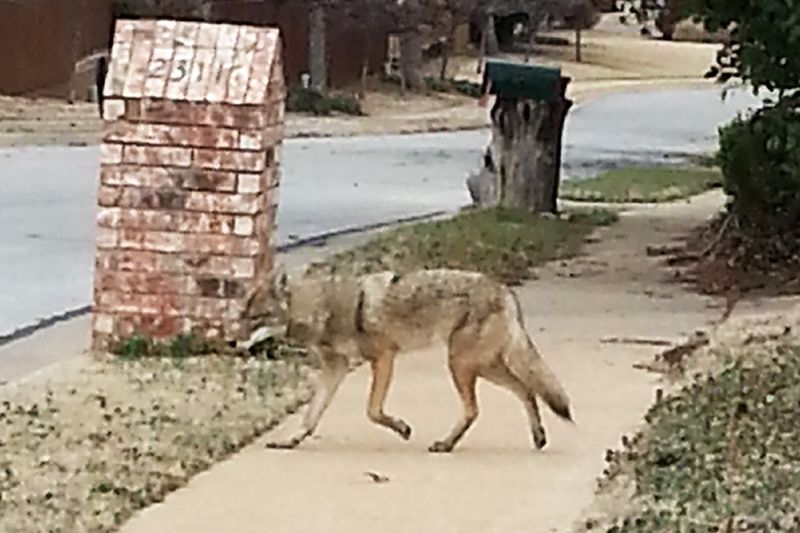
Everything’s bigger in Texas, including the boldness of its coyotes. These animals have been seen exploring urban areas like Austin and Dallas. Known for their adaptability, coyotes in Texas are increasingly comfortable crossing into human territories.
Pet owners must be cautious, especially in areas near woods or open fields. Coyotes are opportunistic hunters.
Interestingly, in Texan folklore, coyotes are often portrayed as cunning tricksters, a testament to their intelligence and adaptability in new environments. Texans are learning to coexist with these clever creatures, adjusting their lifestyles accordingly.
Arizona

With its vast deserts, Arizona is a natural habitat for coyotes. However, urban expansion in cities like Phoenix has led to more frequent sightings. Coyotes in Arizona blend seamlessly into the desert backdrop, making them hard to spot until they enter urban areas.
Residents are advised to secure trash bins and avoid leaving pet food outside. Coyotes are resourceful scavengers.
A fun historical note: The coyote holds a special place in Native American mythology as a symbol of transformation and adaptability, traits evident in their urban incursions.
Colorado
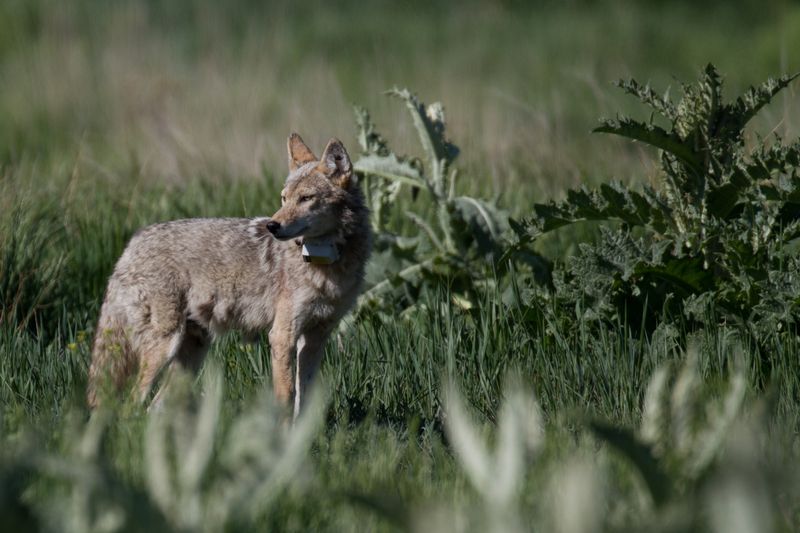
In Colorado, the majestic Rocky Mountains provide a scenic backdrop for the urban-dwelling coyote. Cities like Denver are no strangers to these creatures. Coyotes often venture into suburban yards, drawn by the promise of food and shelter.
Pet owners should maintain secure enclosures and avoid letting pets roam freely. Coyotes are curious explorers.
Did you know? Coyotes in Colorado have been observed using clever tactics, such as watching bird feeders for easy meals, showcasing their intelligence and adaptability in urban settings.
Florida

In Florida, coyotes have adapted to the humid subtropical climate, roaming near cities like Tampa and Orlando. Their presence in urban areas is a testament to their incredible adaptability.
To protect pets, Floridians are advised to keep yards clean and free of food scraps. Coyotes are opportunistic feeders.
Interestingly, the coyote’s expansion into Florida is relatively recent, having only established a population in the state in the last few decades, reflecting their ability to thrive in diverse environments.
Illinois
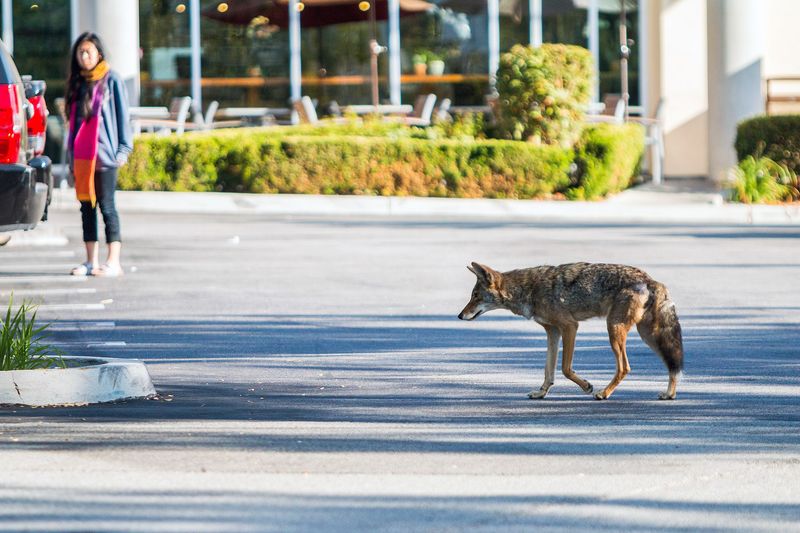
In the heart of the Midwest, Illinois has seen a rise in urban coyote encounters, especially in Chicago. These animals have been observed using green spaces and parks to navigate the city.
Pet owners are encouraged to keep small pets indoors, especially at night when coyotes are most active. Coyotes are nocturnal hunters.
Did you know? The Cook County Coyote Project in Illinois is one of the most comprehensive studies of urban coyotes, highlighting their role in controlling rodent populations in cities.
New York
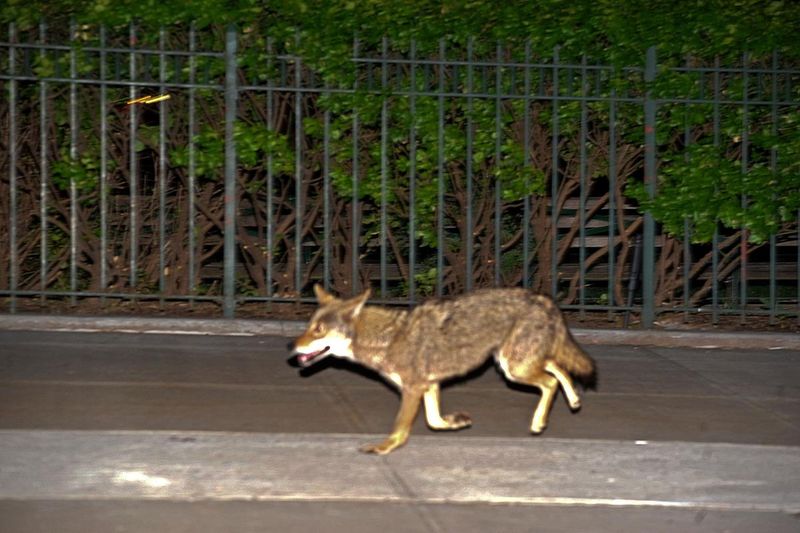
New York, known for its skyscrapers, is also home to urban coyotes, particularly in areas like the Bronx. These animals are surprisingly adept at navigating the urban jungle.
New Yorkers are advised to keep pets on leashes and avoid feeding wildlife. Coyotes can become bold if fed by humans.
A surprising fact: Coyotes have been spotted in Central Park, showcasing their ability to adapt to one of the world’s most urbanized environments, much to the amazement of city dwellers.
Ohio
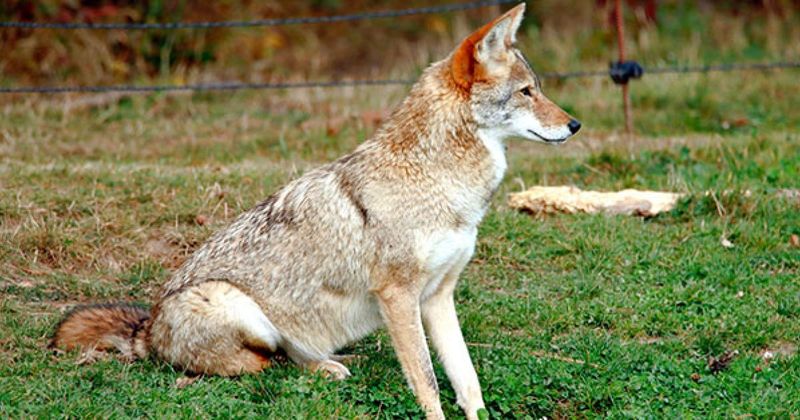
Ohio’s coyote population has steadily increased, with sightings becoming more common in suburban areas around Cleveland and Columbus. These animals are highly adaptable, making homes in parks and green spaces.
Residents should secure their garbage and avoid leaving pet food outside. Coyotes are adept scavengers.
Historically, coyotes were not native to Ohio but have expanded eastward, showing their remarkable adaptability and resilience as they settle into new territories across the state.
Pennsylvania

In Pennsylvania, coyotes have become a common sight in areas transitioning from rural to urban. Cities like Pittsburgh and Philadelphia have reported increased activity.
Pet owners should remain vigilant and keep pets indoors during dawn and dusk. Coyotes are crepuscular hunters.
Interestingly, Pennsylvania’s coyote population has grown from mere sightings to stable numbers, reflecting a successful adaptation to both natural and urban environments. They play a role in controlling local wildlife populations, such as deer and small mammals.
Michigan

Michigan offers a diverse landscape for coyotes, from dense forests to bustling cities like Detroit. These animals are skilled at navigating varied environments.
To protect pets, Michiganders should keep them secure and avoid leaving food outside. Coyotes are resourceful foragers.
Did you know? Coyotes are part of Michigan’s folklore, often depicted as cunning and elusive animals that have adapted to coexist with humans in both rural and urban settings, maintaining a delicate balance in the ecosystem.
Georgia
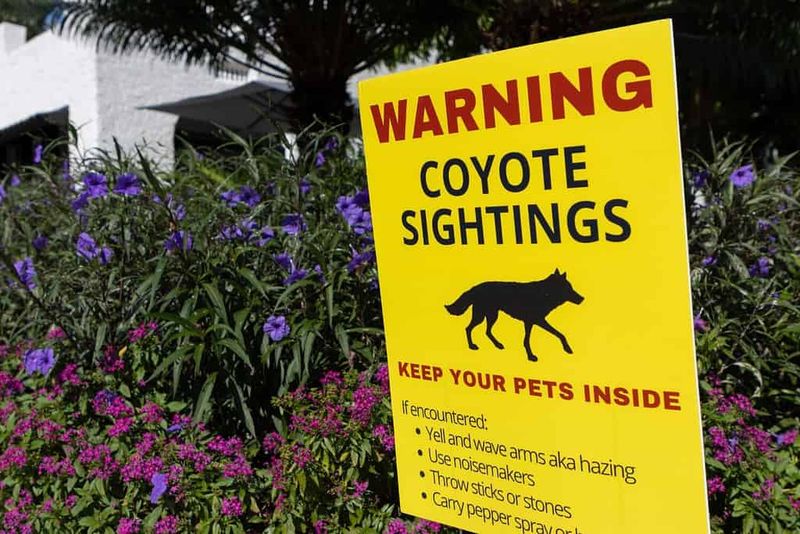
Georgia’s lush landscapes provide a rich habitat for coyotes, now frequently seen in cities like Atlanta. These animals are adept at blending into both rural and urban settings.
Pet owners should ensure their animals are supervised when outside. Coyotes are known to be opportunistic hunters.
A quirky fact: Coyotes in Georgia are increasingly spotted near golf courses, where the manicured greens and water hazards offer a unique environment for exploration and hunting, much to the golfers’ surprise.
North Carolina
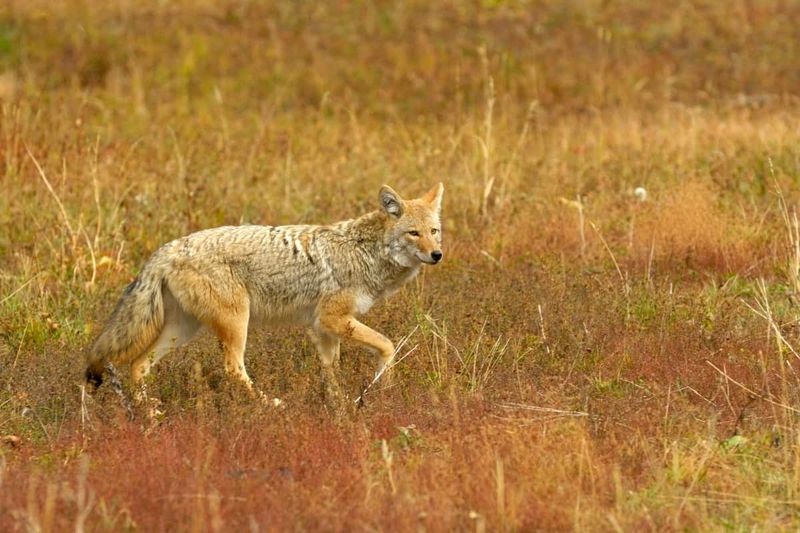
In North Carolina, the growing urban sprawl has seen an increase in coyote sightings, especially in cities like Raleigh and Charlotte. Their adaptability is a hallmark of their survival.
Residents are advised to bring pets indoors at night and secure garbage bins. Coyotes are strategic scavengers.
Historically, coyotes were not native to North Carolina, but have migrated eastward, a testament to their adaptability and resilience, now playing a crucial role in the local ecosystem by controlling rodent populations.
Virginia

Virginia’s suburbs are not immune to the coyote’s expansion, with sightings reported in areas surrounding Richmond. These creatures are stealthy and adaptable.
Pet owners should remain cautious, especially during early morning and late evening hours. Coyotes tend to be most active during these times.
Interestingly, the coyote’s presence in Virginia has increased due to both natural migration and human expansion, leading to new challenges and opportunities for residents to learn about cohabiting with wildlife.
Wisconsin
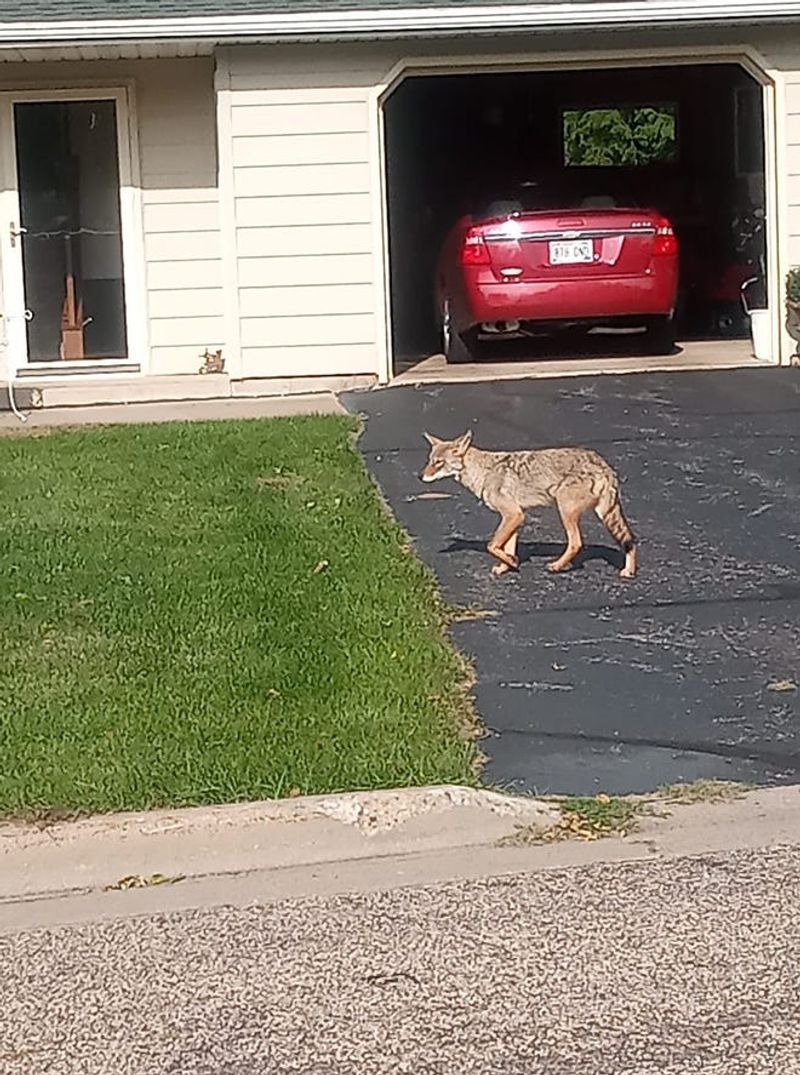
Wisconsin’s rural-urban interface is a perfect setting for coyotes, who’ve been increasingly seen in cities like Madison and Milwaukee. Known for their cunning nature, these animals adapt well to human environments.
Residents should be mindful of pets and secure food sources to discourage coyote visits. Coyotes are opportunistic feeders.
A fascinating tidbit: The coyote’s presence in Wisconsin is part of a broader trend of wildlife adaptation in the Midwest, showcasing their ability to thrive alongside human populations while maintaining ecological balance.
Minnesota

In the snowy expanses of Minnesota, coyotes are a common sight, even in urban areas like Minneapolis. These adaptable creatures are masters at thriving in diverse climates.
Pet owners should ensure animals are supervised outdoors, especially during winter months when food is scarce. Coyotes are skilled hunters.
Did you know? In Minnesota, coyotes have been observed using frozen lakes as pathways, illustrating their ingenuity in navigating the landscape, much to the amazement of local residents who encounter them in unexpected places.
Oregon
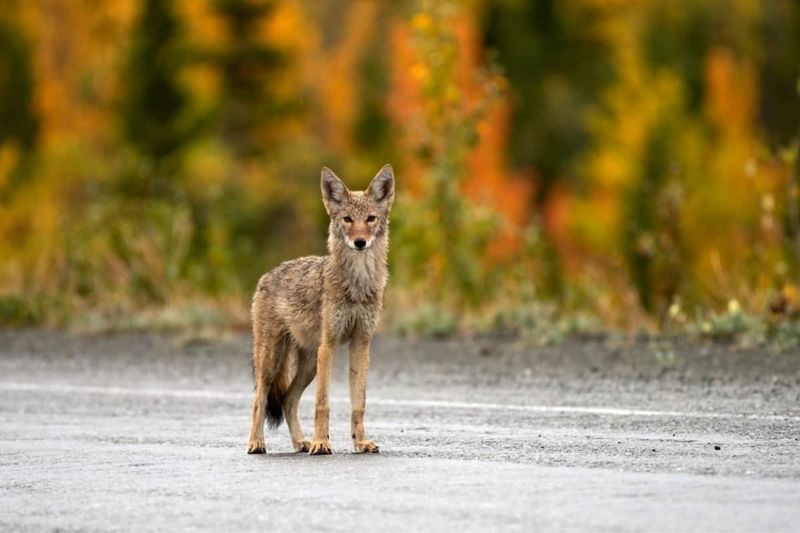
Oregon’s blend of urban areas and natural beauty offers a welcoming environment for coyotes. Cities like Portland see frequent sightings, with coyotes often seen in parks and green spaces.
To protect pets, Oregonians should avoid leaving food scraps outside and secure compost bins. Coyotes are clever foragers.
A quirky fact: Coyotes in Oregon have been known to inhabit areas near vineyards, where they help control pest populations, contributing to the local wine industry’s eco-friendly practices.
Washington
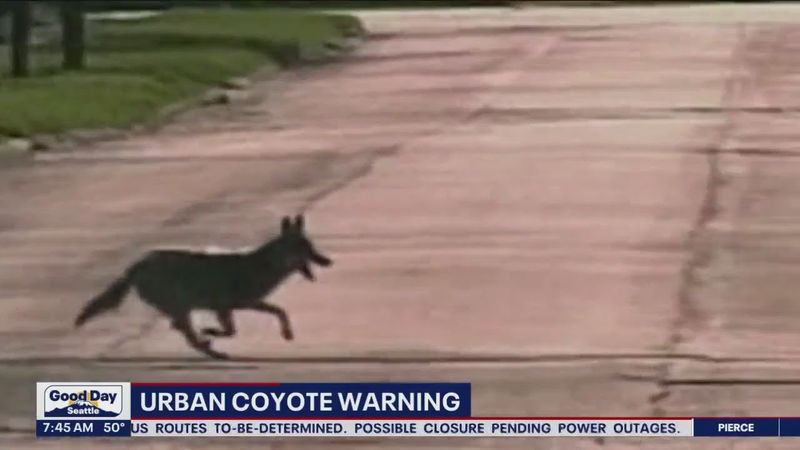
Washington State’s lush landscapes, including urban areas like Seattle, provide an ideal habitat for coyotes. These animals are adept at blending into both cityscapes and forests.
Residents are encouraged to keep pets secure and avoid feeding wildlife. Coyotes can become bold when accustomed to human food.
Interestingly, coyotes in Washington have adapted to urban environments by preying on rats and other small mammals, helping to control these populations in an environmentally friendly manner.
Nevada
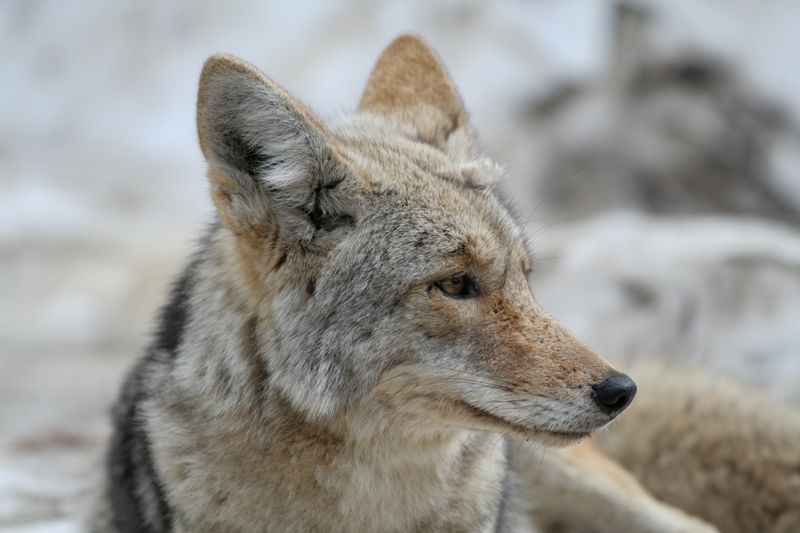
In Nevada, the juxtaposition of desert and city life creates unique encounters with coyotes, especially in Las Vegas. These canines are well-adapted to the arid environment, making their presence known in suburbs.
Pet owners should ensure pets are supervised in yards and secure garbage. Coyotes are adept scavengers.
A fun fact: Coyotes in Nevada have been observed using golf courses as highways, illustrating their adaptability and the unexpected ways wildlife and urban development intersect in this unique state.
Massachusetts
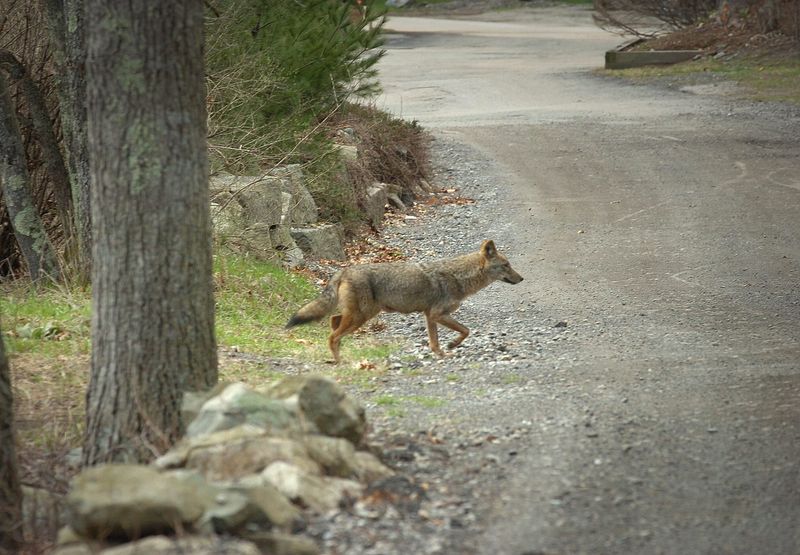
In Massachusetts, coyotes are a common suburban sight, with increased activity reported in areas like Boston. These creatures have adapted well to the state’s mix of urban and rural environments.
Residents should avoid leaving small pets unattended outdoors. Coyotes are opportunistic hunters.
Interestingly, the coyote’s presence in Massachusetts is relatively recent, having expanded their range into New England over the last century, showcasing their remarkable adaptability and impact on local ecosystems.
New Jersey
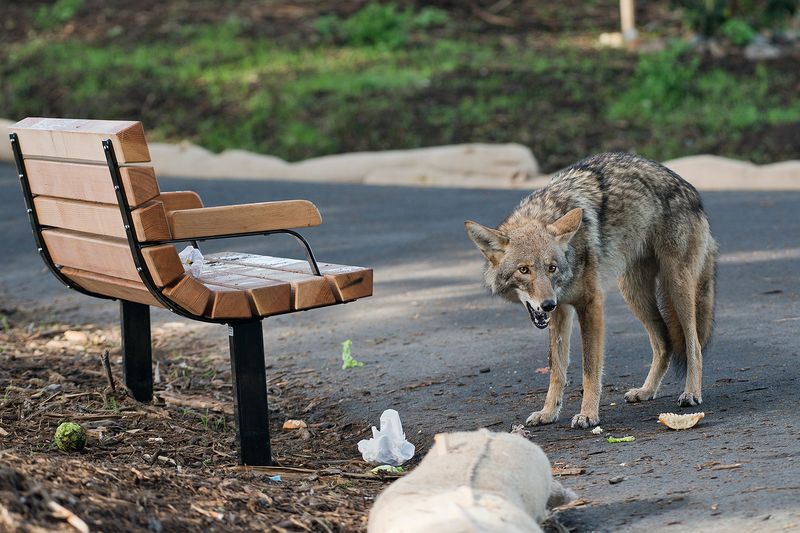
In the bustling Garden State, coyotes have carved out a niche in suburban areas, particularly around cities like Newark. These animals are adept at navigating densely populated regions.
Pet owners should supervise animals outdoors and secure trash bins. Coyotes are strategic scavengers.
A fascinating tidbit: New Jersey’s coyote population has grown significantly over the past few decades, with these resilient creatures finding ways to thrive amidst urban sprawl and offering a glimpse into the adaptability of American wildlife.
Indiana
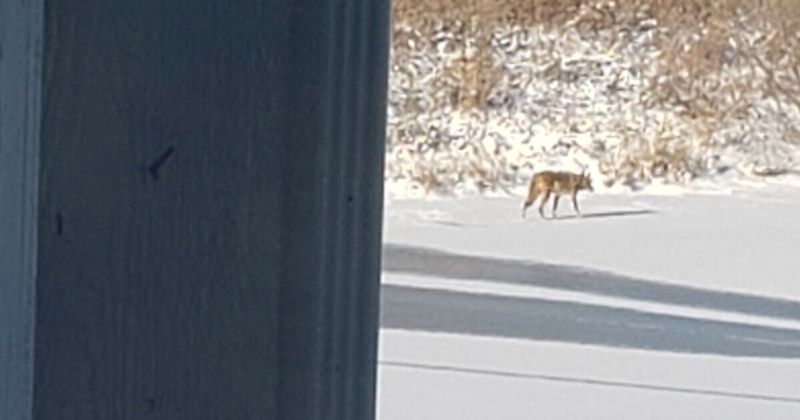
In Indiana, coyotes have become a common sight in suburban areas. Known for their adaptability, these cunning creatures now navigate between the woodlands and the city. Imagine waking up in the morning to find a coyote calmly trotting down your street.
Pet owners have started to take extra precautions, keeping their furry companions indoors during evening hours. This shift in behavior illustrates the coyote’s remarkable adaptability but also raises concerns for small pets’ safety.
Historically, coyotes were considered creatures of the wild, but their presence in cities like Indianapolis challenges that notion, reflecting their ability to thrive alongside humans.

